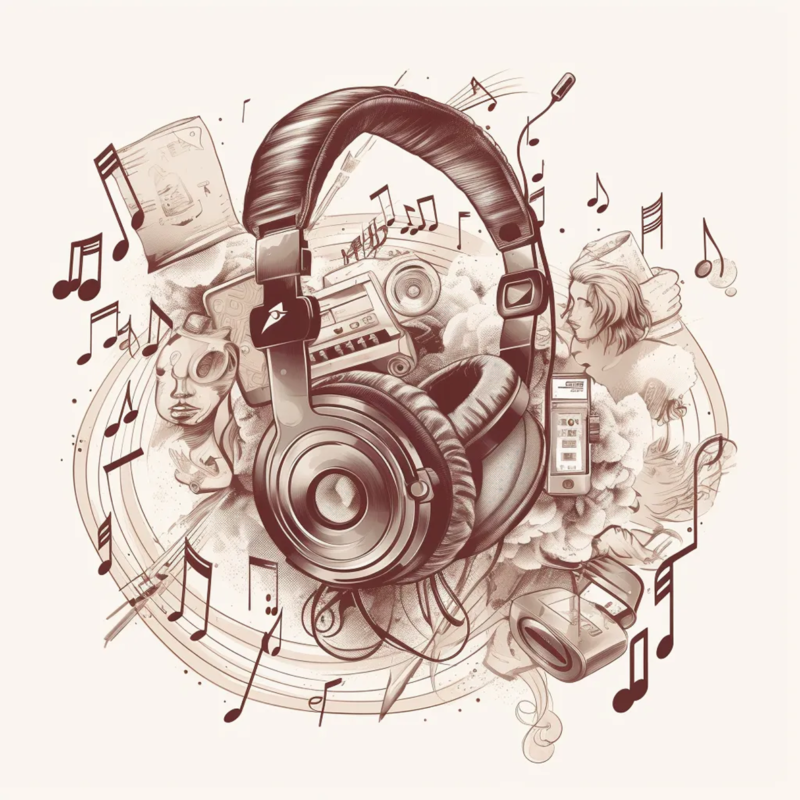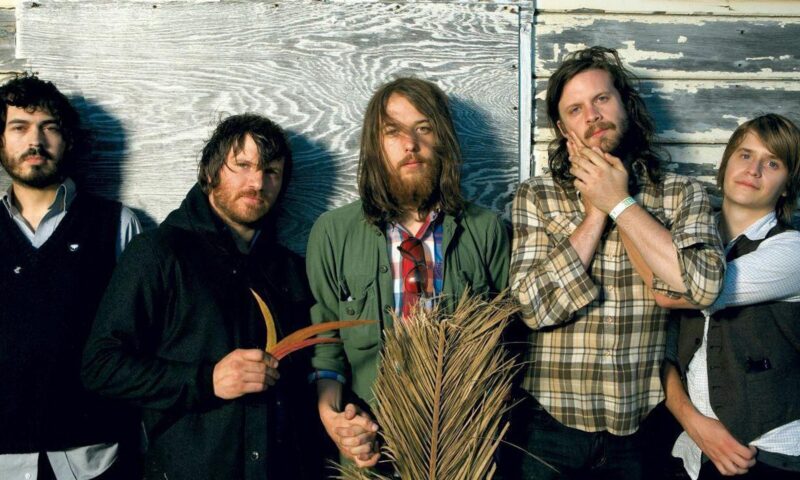
Music is a collection of organized sounds or tones. History records that music has been present and known to modern Homo Sapiens for about 180,000 to 100,000 years ago. No one knows exactly when humans began to recognize art and music.
The form of music consists of sounds expressed through regular rhythm and beautiful melody. Music is created from various media such as human voices and musical instruments. Music created with musical instruments must have harmony.
Now, you already know the definition and understanding of music. However, did you know that music, sound, and similar elements are closely related to someone’s emotions and memories? Yes, indeed, if you’re curious, let’s explore the following discussion.
Music Always Relates to Emotion
Music always has a place to fill the heart with loneliness, happiness, sadness, or even anger. Somehow, music seems to have a magical ability to make the heart and mind feel better. However, did you know that there is a relationship between music and human emotions? Yes, music can affect our mood in surprising ways.
Since ancient times, psychologists have studied this phenomenon and found interesting facts about how music can affect our feelings.
The elements in music such as rhythm, tempo, lyrical meaning, harmony, volume, and clarity of sound are what can influence a person’s mood and emotion. Therefore, jazz music, which can provide a calming atmosphere, is often played in dining places.
Other research on musical elements suggests that when a piece of music has a fast tempo, very high volume, and legato articulation (notes played smoothly and connected), it can make someone feel angry.
Conversely, if a piece of music has a fast tempo, high volume, staccato articulation (notes played in a short, detached manner), it will trigger happiness.
Then, if a piece of music has a slow tempo, low volume, and legato articulation, it will evoke sadness. Conversely, if the articulation is staccato, it will evoke fear in the listener. The reason music affects someone’s mood is due to the music itself, which can be a significant stimulus for the brain. This affects the brain in both cognitive and emotional aspects.
The Relationship Between Music and Emotion
Are you among those who listen to music every day? If yes, surely some of those songs can immerse you in their atmosphere, adjusting to your mood. We can feel energized when listening to rock music and can feel melancholic when listening to sad-toned music. This has been proven by research revealing that music influences a person’s mood! When someone listens to cheerful music, it will positively affect their mood, and vice versa.
There is much research supporting claims about the relationship between music and emotions. One of them is the result of research by Thoma and his colleagues in 2012. They found that classical music could increase feelings of happiness and reduce stress levels in people who listen to it regularly.
In addition, there is also other research on the relationship between music and emotions conducted by Juslin and Vastfjall in 2008. Their research results showed that music with fast tempo and cheerful tones could trigger positive feelings such as happiness and joy. Meanwhile, music with slow tempo and sadder tones tend to trigger negative feelings such as sadness and fear.
However, the influence of music on a person’s emotions is not uniform and can vary depending on the type of music, a person’s initial mood, and other factors.
Music Genre and the Emotions Produced
How can music affect mood? It turns out, in terms of emotions, listening to music can influence the human nervous system present in the brain. Structures like the amygdala and the orbitofrontal cortex work together to process a person’s emotions. Therefore, it’s not surprising that listening to music can affect someone’s mood.
Although it may sound irrelevant, the reality is that the choice of music genre can affect the emotions of the person listening to it. Here are the effects of listening to music based on some of the most popular genres.
- Jazz: Can help reduce stress and calm a tired body.
- Pop/rock: Fast and energetic pop or rock music can improve mood and make someone feel more enthusiastic. However, this genre of music can easily distract you from your activities while working.
- Heavy metal: With loud and aggressive sounds, heavy metal music is believed to help people relieve negative emotions and divert attention from everyday life problems.
- Rap: With energetic delivery, rap music can motivate and uplift spirits, especially in the context of sports and physical activities. However, the use of profanity in it can also have negative effects on some people.
- Dance: Dance genre songs will make you feel better quickly. The fast tempo and high energy levels will get you grooving.
- Reggae: Reggae is one of the music genres that can soothe you when your mood is explosive. Some people believe reggae music has a healing rhythm for the human heart, especially when listened to during rest.
- Classic: Can increase focus and concentration and calm the mind, this genre is suitable for listening to while studying or working.
In addition to Emotions, Music Can Evoke Someone’s Memories
Imagine you’re walking through a crowded place on your way to work. You pass by a street musician playing a song you haven’t heard in years. Suddenly, instead of paying attention to what’s happening around you, your mind takes you back to the first time you heard that song.
Listening to music can bring back memories of past experiences, who we were with at the time, and the feelings associated with that memory.
The experience we feel when music evokes memories of events, people, and other things from our past is known as music-evoked autobiographical memory. This is a common experience felt by humans.
It usually appears as an unintended memory. Meaning, we don’t try to remember that memory, but the memory just comes up spontaneously.
How Can Music Evoke Someone’s Memories?
Researchers have begun to uncover why music becomes an effective cue for recalling memories. First, music often accompanies various important events in human life, such as farewells, graduations, weddings, and funerals, so it plays a crucial role in connecting us to historical moments that shape our identity.
Moreover, music has the ability to capture our attention and influence our minds, bodies, and emotions. When this happens, music can be tied to the details of life events that are happening, causing the music to become a trigger for remembering those events in the future.
So why is music more sensitive to evoke someone’s memories compared to other media? In some studies, it is explained that music is more familiar to a person’s ears, so it can evoke more memories, and bring memories into our minds more spontaneously compared to other media.
Therefore, one of the reasons why music can be a more effective cue for evoking memories compared to, for example, our favorite film or book, is because we usually listen to songs more often than watching films, TV shows, or reading books.
Conclusion
Music has been an integral part of human life since ancient times. From uplifting war rhythms to melancholic songs that soothe the heart, music has a unique power to influence our emotions and even our brains as a whole. In this article, we will explore how music affects our feelings and brain function.
One of the primary ways in which music affects us is through emotions. Listen to a cheerful and fast-paced song, and you may feel energized and enthusiastic. Conversely, slow and melancholic songs can make us feel sad or contemplative. This happens because music has the ability to influence the production of hormones in our bodies, such as endorphins that enhance happiness, or cortisol that is related to stress. Therefore, music is often used as a form of therapy to address emotional issues and mental health.
Furthermore, music also has a significant effect on our brains. Scientific studies have shown that when we listen to music, our brains are active in various areas involved in sound processing, emotions, and memory. Music can also affect heart rate, blood pressure, and even our breathing patterns. It’s no wonder that music is often used in meditation and relaxation practices to achieve peace of mind.
Not only listening to music, but playing musical instruments also has remarkable cognitive benefits. Learning to play a musical instrument involves coordination between hands and eyes, training memory, and concentration. It also enhances creativity and lateral thinking abilities. For children, playing musical instruments has been shown to improve their brain development, including verbal and non-verbal skills.
Music also has the power to connect people from various cultural backgrounds and languages. When we listen to music, we can feel the same emotions as others, without the need for words. Music can be a powerful tool for uniting communities and creating emotional bonds among individuals.
Thus, music is not just a form of entertainment, but also has a profound impact on our lives. Its broad influence on our emotions and brains makes it a powerful tool in coping with stress, improving mental health, and conveying feelings without words. Therefore, let us wisely harness the power of music and enjoy every note to enhance the overall quality of our lives.












